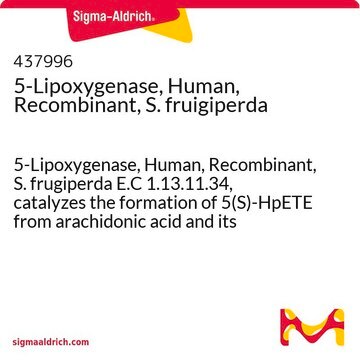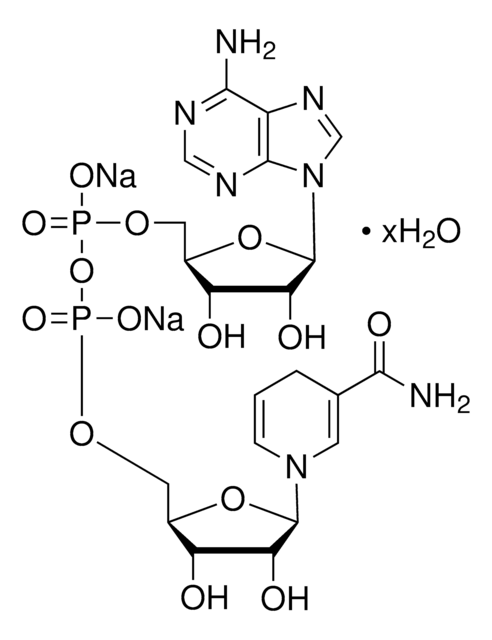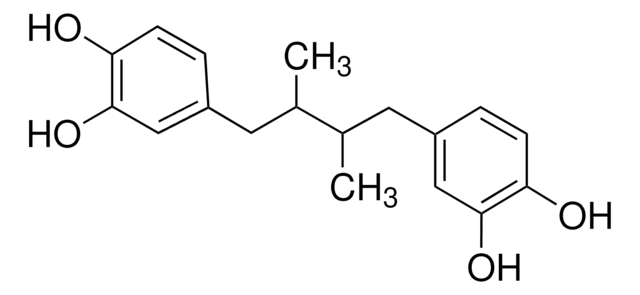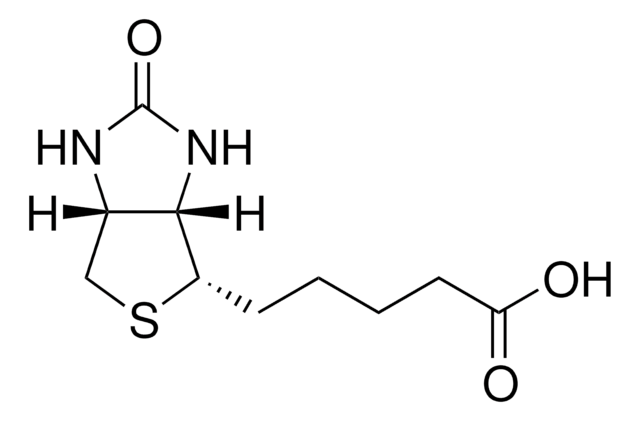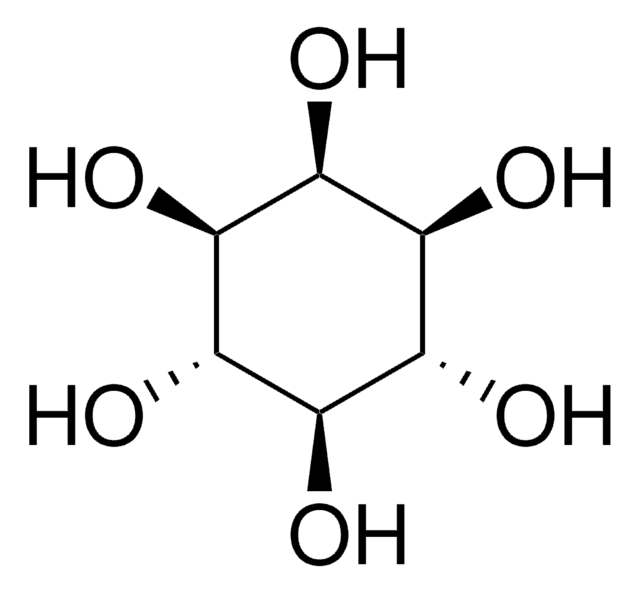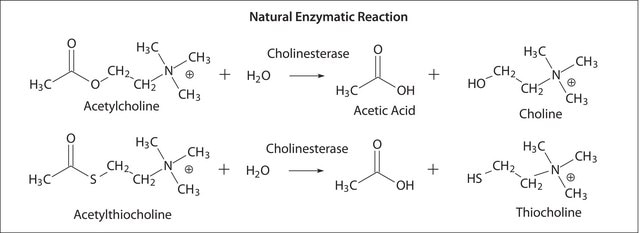L7395
Lipoxidase from Glycine max (soybean)
Type I-B, lyophilized powder, ≥50,000 units/mg solid
Synonym(s):
15-lipoxygenase, LOX A, Linoleate:oxygen oxidoreductase, Lipoxygenase
Sign Into View Organizational & Contract Pricing
All Photos(3)
About This Item
CAS Number:
Enzyme Commission number:
EC Number:
MDL number:
UNSPSC Code:
12352204
NACRES:
NA.54
Recommended Products
type
Type I-B
Quality Level
form
lyophilized powder
specific activity
≥50,000 units/mg solid
mol wt
94 kDa
shipped in
wet ice
storage temp.
−20°C
Looking for similar products? Visit Product Comparison Guide
General description
Lipoxidases (LOXs), or lipoxygenases, are nonheme iron proteins. Lipoxygenases are widely present in plants, some microorganisms, and animals. They are categorized as LOX-1, LOX-2, and LOX-3 with respect to pH and optimum temperature, substrate specificity, and level of inhibition by different agents.
Application
Lipoxidase from Glycine max (soybean) has been used:
- to study the effects of 2-(α-D-glucopyranosyl)methyl-2,5,7,8-tetramethylchroman-6-ol(TMG) on oxidation of lipoproteins
- as a representative enzyme for lipoxygenases in microplate assay platform to screen for enzymes degrading wood extractives
- as a positive control in lipoxygenase inhibitory activity assay
The soybean enzyme will use arachidonic acid as a substrate, with ~ 15% of the activity indicated using linoleic acid as the substrate; the product of arachidonic acid oxidation is 12- or 15-hydroperoxyarachidonic acid (12-HPETE or 15-HPETE).
Biochem/physiol Actions
Lipoxidases are deactivated by heat treatment near 100°C for 5 to 10 minutes. Studies show that gamma irradiation treatment decreases the specific activity of soybean lipoxygenases. These enzymes are used in studies related to asthma and allergies. Lipoxidases are applicable for industrial bio-transformations such as in the production of aroma fine chemicals.
Catalyzes the hydroperoxidation of lipids containing a cis,cis-1,4-pentadiene structure.
Unit Definition
One unit will cause an increase in A234 of 0.001 per min at pH 9.0 at 25 °C when linoleic acid is the substrate in 3.0 ml volume (1 cm light path). One A234 unit is equivalent to the oxidation of 0.12 μmole of linoleic acid.
Physical form
Contains stabilizer and NaCl
signalword
Danger
hcodes
pcodes
Hazard Classifications
Resp. Sens. 1
wgk_germany
WGK 1
flash_point_f
Not applicable
flash_point_c
Not applicable
ppe
Eyeshields, Gloves, type N95 (US)
Certificates of Analysis (COA)
Search for Certificates of Analysis (COA) by entering the products Lot/Batch Number. Lot and Batch Numbers can be found on a product’s label following the words ‘Lot’ or ‘Batch’.
Already Own This Product?
Find documentation for the products that you have recently purchased in the Document Library.
Customers Also Viewed
Norimasa Yoshida et al.
Atherosclerosis, 162(1), 111-117 (2002-04-12)
A novel vitamin E derivative that is freely soluble in water, 2-(alpha-D-glucopyranosyl)methyl-2,5,7,8-tetramethylchroman-6-ol (TMG), was evaluated for ability to inhibit development of atherosclerosis in Watanabe heritable hyperlipidemic (WHHL) rabbits or cholesterol-loaded New Zealand White rabbits. Although TMG rapidly entered the circulation
Sereyvath Yoeun et al.
Frontiers in chemistry, 6, 500-500 (2018-11-15)
Allene oxide cyclase (AOC) is a key enzyme in the jasmonic acid (JA) biosynthetic pathway in plants, during which it catalyzes stereospecific conversion of 12,13(S)-epoxy-9(Z),11,15(Z)-octadecatrienoic acid (12,13-EOT) to cis(+)-12-oxophytodienoic acid. Here, rice allene oxide cyclase (OsAOC) was localized to the
Microplate enzyme assay for screening lipoxygenases to degrade wood extractives
Nguyen D, et al.
Biocatalysis and Biotransformation, 25(2-4), 202-210 (2007)
Ewelina Zielińska et al.
Nutrients, 9(9) (2017-09-05)
This study investigated the effect of heat treatment of edible insects on antioxidant and anti-inflammatory activities of peptides obtained by in vitro gastrointestinal digestion and absorption process thereof. The antioxidant potential of edible insect hydrolysates was determined as free radical-scavenging
Chemical composition and lipoxygenase activity in soybeans (Glycine max L. Merr.) submitted to gamma irradiation
de Barros EA, et al.
Radiation Physics and Chemistry, 98, 29-32 (2014)
Our team of scientists has experience in all areas of research including Life Science, Material Science, Chemical Synthesis, Chromatography, Analytical and many others.
Contact Technical Service
